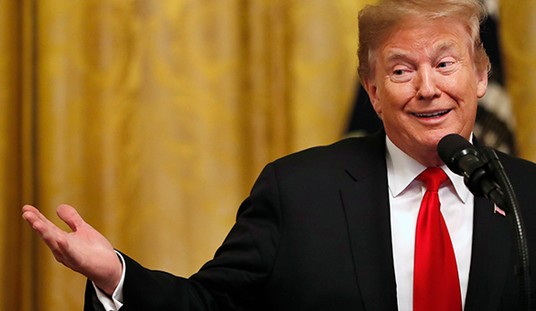Associated Press stories on the economy and the fiscal cliff during the previous week tell us that we’re in for four more years of having the so-called “essential global news network” and the rest of the establishment press tell us that we aren’t really seeing what we can see right in front of us. Meanwhile, their headlines and the stories they choose to ignore demonstrate a dogged determination to keep those who don’t follow the news closely from seeing what they don’t want them to see.
The AP’s headline writers and Christopher Rugaber already had their minds made up about what last Friday’s Employment Situation Summary from the Bureau of Labor Statistics would mean even before it was released.
In a dispatch the previous evening headlined “U.S. job market resilient despite budget fight,” Rugaber decided that the additional 155,000 jobs analysts predicted the report would show constituted proof that “the job market held up” during December’s fiscal cliff negotiations between the White House and Congress.
The AP brought out a deeper shovel the next morning just ahead of the report, claiming that it “was expected to show underlying strength.” When BLS’s number exactly matched consensus predictions, Rugaber and co-author Paul Wiseman wrote that it was in line with “the solid but unspectacular monthly pace of the past two years.”
Horse manure. The two-year average of 153,000 is just barely above the 150,000 jobs which need to be added every month just to keep up with population growth. What’s “solid” about that?
While Rugaber and the rest of the press write and talk about resilience, the raw (i.e., not seasonally adjusted) jobs numbers from BLS, in combination with still far too high unemployment, tell us a far different story. Here are the actual changes in employment for the last four months of the past 13 years:

Note that both in total and in the private sector, the net change in jobs was worse than 2011 in three of the final four months of 2012. Additionally, December’s contractions of 243,000 and 103,000, respectively, were worse than December 2005 and 2006 — years during which the establishment media was mostly unimpressed with how the job market was performing.
In a decent economy, the monthly jobs numbers would be beating the pants off of that period, simply because there’s so much economic slack. The seasonally adjusted unemployment rates in December 2005 and December 2006 — in the midst of that supposedly God-awful Bush economy — were 4.9 percent and 4.4%, respectively. Monthly seasonally adjusted job additions of 150,000 or so are acceptable when unemployment is so low, and it turns out that the economy added a more than acceptable 2.5 million jobs in 2005, followed by 2 million in 2006.
But the current unemployment rate is 7.8 percent, while the fully loaded rate is still 14.4%. The only reason employers appeared to be unaffected by the recent goings-on in Washington is that they’ve long since adjusted to our government’s deficit- and bogus stimulus-driven malaise. The fiscal cliff calamity is just another episode of the same old song and dance they’ve seen during the four-plus years since Barack Obama was first elected president.
In the middle of the last decade, the press continually pounded readers, listeners, and viewers with tales of the long-suffering unemployed and the homeless. The sustained pain has been far greater during a far longer period during Obama’s four years, even though we are now 3-1/2 years removed from the recession’s official end. Yet we rarely see or hear a word about chronic unemployment or rising homelessness.
Wise news consumers know that in the current media environment, the best economic coverage and analysis will be found in the house editorials at the nation’s two leading business newspapers. As a Friday evening editorial at one of them, Investor’s Business Daily, made the following points which most others ignored about last Friday’s employment report:
… [T]he pool of long-term unemployed was a staggering 4.8 million in December, which is 2 million more than when Obama took office. The average length of unemployment was 38
monthsweeks — almost 20monthsweeks longer than four years ago and 15monthsweeks longer than when the recession ended in June 2009. [See addendum below — TB.]
Sometimes, as in this chart from the St. Louis branch of the Federal Reserve, you just have to see it graphically to fully comprehend just how bad things are:

The only thing I see that is “solid” and “resilient” in this graph is a record average length of unemployment refusing to come down, even though it’s almost twice as high as any value previously seen in over 60 years of recordkeeping.
As to the fiscal cliff, the biggest fiction perpetrated by the AP, Business Week, and so many others is that, in AP’s words, “the tax package that Congress passed New Year’s Day will protect 99 percent of Americans from an income tax increase.”
No it won’t. It took an editorial at the Wall Street Journal, the other source of legitimate economic news in the current media firewall, to point out that roughly three times as many taxpayers will be affected, and that their marginal tax rates on each dollar of additional income will be far higher than advertised:
… The revival of two dormant provisions of the tax code means the much ballyhooed $450,000 income threshold for the highest tax rate is largely fake.
… Under the new law, some of the steepest tax increases may fall on upper-middle class earners with incomes just above $250,000.
… The Senate Finance Committee informs us that in effect the loss of the personal exemptions, currently $3,800 per family member, can mean a 4.4 percentage point rise in the marginal tax rate for a married couple with two kids and incomes above $250,000. A family with four kids in that income range faces about a six percentage point marginal rate hike. The restored limitations on itemized deductions can raise the tax rate by another one percentage point.
… families in the 33% tax bracket could see their effective marginal rate paid on each additional dollar earned rise to above 38%.
All of this was done despite our still awful job market and declining personal income, pretty much ensuring that the economy will underperform as far as the eye can see. Oh, and in case you missed it, Obama doesn’t think he’s done making the rich pay their “fair share.”
Welcome to the new, media-numbed normal.
Update (1/13/13): The Investor’s Business Daily excerpt quoted above originally refered to “months” three times. The references, as seen in the chart, should have been to “weeks.” I have crossed out IBD’s references to “months” above and replaced them with “weeks” to remove any doubt as to what the chart really says. The points that the result is almost twice as long as we’ve seen at any other time since World War II, and that the press has rarely if ever reported this readily available information, both still stand. — TB.









Join the conversation as a VIP Member